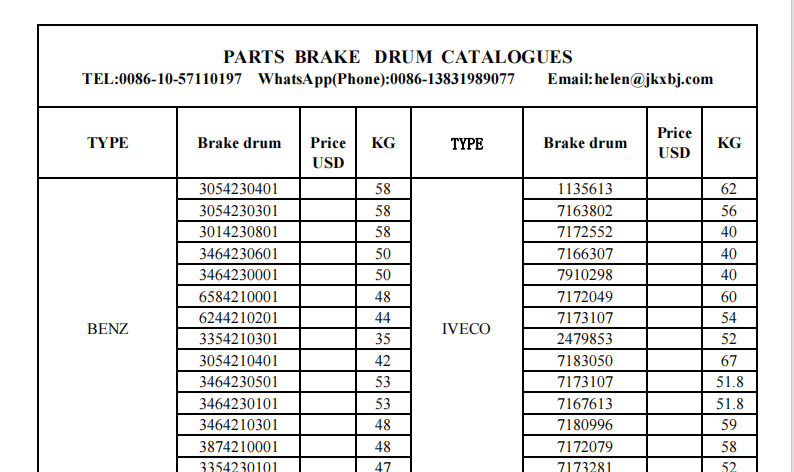Nov . 20, 2024 19:26 Back to list
brake drum shoes
Understanding Brake Drum Shoes Essential Components of Vehicle Safety
Brake drum shoes are critical components in the braking system of many vehicles, particularly those utilizing drum brakes. While the modern automotive industry has increasingly shifted towards disc brakes, drum brakes remain prevalent in various vehicle types, especially older cars, motorcycles, and certain trucks. This article aims to shed light on brake drum shoes, their functionality, importance, and maintenance tips.
What Are Brake Drum Shoes?
Brake drum shoes, often referred to simply as brake shoes, are curved friction elements that are housed within a brake drum. When the brake pedal is pressed, hydraulic pressure is exerted through the brake lines, causing the brake cylinders to push the brake shoes outward against the inner surface of the brake drum. This friction slows down or stops the rotation of the wheel, effectively bringing the vehicle to a halt.
Structure and Function
Typically made from materials like composite compounds, rubber, or metal, brake shoes have a friction material bonded to their backing plates, which is responsible for creating the necessary friction to stop the vehicle. When the brake shoes come into contact with the drum, they generate heat as a byproduct of friction. This heat is managed through the drum's design and material properties, allowing for effective and safe braking performance.
Brake drum shoes are usually found in pairs—one for each side of the brake drum. Their design includes features such as an adjuster or a spring mechanism that helps maintain the correct distance between the shoe and the drum, ensuring optimal friction is achieved without causing unnecessary wear.
Importance of Brake Drum Shoes
The importance of brake drum shoes in maintaining vehicular safety cannot be overstated. They play a pivotal role in ensuring that a vehicle can stop effectively and efficiently. When functioning correctly, they provide reliable and responsive braking performance; however, if they wear down or fail, consequences can be dire.
One of the primary advantages of drum brakes is their inherent design, which allows them to generate more force than their disc counterparts in certain applications, particularly under conditions of heavy loads. This makes drum brakes and, by extension, drum shoes essential for vehicles that frequently haul heavy loads or operate under towing conditions.
brake drum shoes

Signs of Wear and Maintenance
Like any vehicle component, brake drum shoes have a lifespan and will eventually require replacement. Signs that your brake shoes may need attention include
1. Squeaking or Grinding Noises A high-pitched squeal can indicate that the friction material is wearing away. If you hear grinding sounds, it may mean the shoes are severely worn and need immediate replacement.
2. Vibration when Braking If you feel a pulsation or vibration in the brake pedal or steering wheel while braking, it could suggest uneven wear on the brake shoes or issues with the brake drum.
3. Poor Braking Performance Any noticeable decrease in your vehicle's ability to slow down or stop might signal a problem with the brake shoe and drum assembly.
4. Visible Wear If you have access to inspect your brake components, look for signs of thinning or chipping on the brake shoes.
Regular maintenance of the braking system is essential. This includes periodic inspections, cleaning, and replacing worn-out components. A qualified mechanic can provide thorough checks to ensure that the brake shoes, drums, and associated parts function correctly.
Conclusion
In summary, brake drum shoes are vital to the safety and functionality of a vehicle's braking system. Understanding their role, recognizing signs of wear, and conducting regular maintenance can significantly enhance your vehicle's performance and safety. While advancements in automotive design may lean towards disc brakes, drum brakes, and their crucial components—like drum shoes—remain a relevant and critical aspect of many vehicles. Ensuring their proper condition can mean the difference between a safe journey and an accident, emphasizing the necessity of being proactive about vehicle maintenance.
-
Scania Brake Drums: OEM Quality for Optimal Safety & Durability
NewsAug.16,2025
-
R.V.I: Advanced Remote Visual Inspection for Precision
NewsAug.15,2025
-
Discover HYUNDA: Innovative Vehicles, Equipment & Solutions
NewsAug.14,2025
-
R.V.I: Unlock Advanced Insights & Real-time Performance
NewsAug.13,2025
-
Kamaz Brake Drum: Durable & Reliable for Heavy Duty Trucks
NewsAug.12,2025
-
Heavy Duty Iveco Brake Drum - Premium Quality & Safety
NewsAug.11,2025
